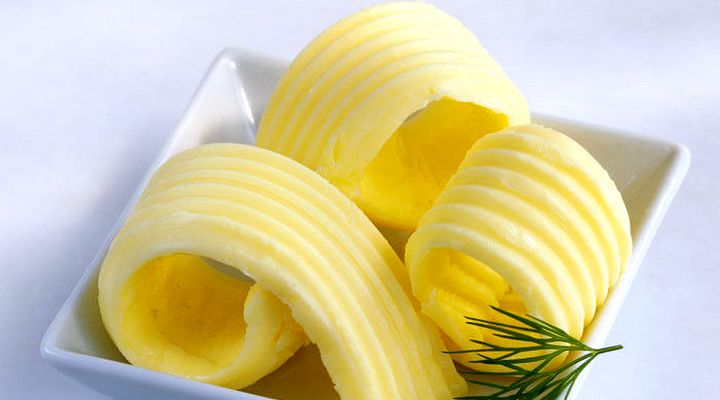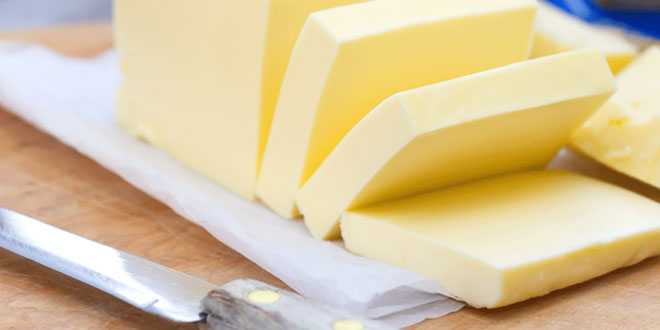Internet users can find a plethora of inaccurate nutrition information. Some may be based on old or insufficient evidence, while others may result from sloppy or insufficient research. It's also possible to hear information from experts that appears to contradict what you recently read.
The health implications of butter and margarine are an excellent example of a topic where no one can reach a consensus. This article examines both arguments and draws comparisons between the two.
The Difference Between Butter and Margarine

Butter, produced by churning cream, is a staple food in many cultures. The most common use for vegetable shortening is as a frying oil, a spread, or an ingredient in baked goods like cakes and pastries. Saturated fat predominates in this condensed form of milk fat.
The purpose of creating margarine, a processed food, was to create a product that was visually and texturally comparable to butter. It's frequently touted as a substitute that's better for your heart.
Why Butter Is Good For You
Butter may provide a unique combination of nutrients. Vitamin K2, which has been linked to better bone health, may be present in butter from grass-fed cows. Grass-fed butter is a more nutritious option than butter produced from cow-fed grains.
The Potential Dangers of Butter Consumption

Butter has a lot of saturated fat and cholesterol. Thus some health professionals recommend limiting consumption.
Very High in Saturated Fat
Butter's high level of saturated fat has made it the target of public scorn for many years. About half of its total weight is saturated fat, with the remainder comprised mostly of water and unsaturated fat.
The results of observational research on the possible link between saturated fat and cardiovascular disease have been contradictory. Recent research has found that replacing saturated fat with polyunsaturated fat can lower the risk of cardiovascular disease by as much as 17 percent.
Poor Cholesterol Control
Cholesterol is also prevalent in butter. In the past, a high-cholesterol diet was believed to be one of the leading causes of cardiovascular disease. Concern was prompted by research linking elevated cholesterol levels in the blood with an increased threat of cardiovascular disease.
It is now understood that most people's blood cholesterol levels are not affected by consuming a normal dietary quantity of cholesterol.
Margarine's Positive Effects on Health
What sort of vegetable oils are used, and the preparation method determines how healthy margarine will be.
Polyunsaturated Fat-Rich
Polyunsaturated fat is abundant in most margarine varieties. The specific quantity is related to the types of vegetable oils utilized in its production. For instance, margarine made from soybean oil may include about 20% polyunsaturated fat.
The majority of experts agree that polyunsaturated fats are the best kind of fat to consume. Compared to saturated fat, it may even be better for your heart.
One study found a 17% reduction in heart disease risk when substituting saturated fat with polyunsaturated fat but no meaningful effect on the risk of death due to heart disease.
Plant Sterols and Stanols Possible
Plant sterols and stanols are added to some margarine. Oils extracted from vegetables also contain high levels of these chemicals.
In the short term, margarine with added phytosterols reduces both total and "bad" LDL cholesterol, but they may have the opposite effect on "good" HDL cholesterol.
Nevertheless, most studies haven't shown any correlation between total phytosterol consumption and increased cardiovascular disease risk. That risk factors are different from inevitable results has to be emphasized.
The Dangers of Using Margarine
Trans fat, often found in margarine, has been linked to an increased risk of heart disease and other chronic health conditions, although it may include certain heart-friendly elements.
Containing a Lot of Trans Fats
Unlike butter, vegetable oils don't solidify when left out at room temperature. They undergo a chemical transformation known as hydrogenation in the labs of food scientists, rendering them solid and suitable for use in margarine.
The oils are subjected to extreme conditions, including high temperatures, pressure, hydrogen gas, and a metal catalyst. Hydrogenation converts part of the unsaturated fat to solid at room temperature saturated fat, which also extends the product's shelf life.
The Conclusion
Butter and margarine serve the same role in the kitchen and can have comparable appearances, although their nutritional characteristics vary. In contrast to butter, Margarine is high in unsaturated fat and even trans fat in some cases. Saturated fat's association with heart disease has been minimized recently, but its impacts on health remain contentious.
Trans fats, found in some margarine, are known to increase the risk of chronic illness. However, there is a consensus amongst experts. Because of this, margarine without trans fats is rapidly gaining market share. Choose margarine manufactured with healthy oils, such as olive oil, if you prefer it over butter.




